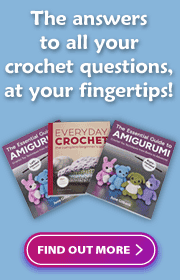We’ve had friends visiting and they brought their PS3 and Rock Band game – so much fun! The game is played with a guitar, drums and a microphone – but the noise of the drumsticks hitting the drums is LOUD, so you have to play at high volume to hear the song over your drumming. […]

Archive for Category: Sewing
supercute sea creatures
I was lucky enough to receive a free copy of Futuregirl’s Supercute Sea Creatures pattern a few days ago (thanks Alice!) so that means it’s time for me to learn another new craft – how to sew felt softies! Click for larger pic The last time I attempted blanket stitch was well over 20 years […]
green zippered pouch
My parcel has arrived at its destination, so I can now show you the surprise present I made for my favourite (and only 😉 ) aunt: Click for full size image A little zippered pouch, loosely based on Splityarn’s zippered wristlet tutorial. I made a ribbon from the lining fabric to embellish the outside of […]
pincushions!
I have to share some of the gorgeous pincushions being made from my tutorial: by Empty Elizabeth by Hashiworks by Creative Quilt Girl by Florence Great job, ladies – I love the variety of fabrics and ribbons/tape you all used. I’d love to see any other projects based on my tutorials – please send them […]
look at my new toy
Look what I’ve got! It’s a shiny new Husqvarna Viking Emerald 116 sewing machine! It’s the basic model, but it still has 16 stitches and 8 (!) different feet. It even threads the needle for me! And, most importantly, it purrs away, stitching cleanly and easily through ANYTHING. This machine has some serious power behind […]
handmade holidays
Welcome to all Sew,Mama,Sew! readers who are stopping by today! Sew,Mama,Sew! Handmade Holidays: 30 Days of Gifts to Sew! is going to be a great resource – every day in November they will have a different theme with ideas and inspiration for holiday gifts you can sew. And watch out for a few of my […]
sewing machine blues
I feel sad and stupid. A little over a year ago, I spent $100 and bought a proper sewing machine. It was a Singer, so I thought it would be a good investment and would last me for a decade or two. Within days, it went wrong. The needle jammed down inside the machine and […]
offset square wrist pincushion tutorial
This tutorial is Donationware – the instructions are available for free, but if you like it please consider sending me a donation to show your appreciation: Send me a donation and receive the easy-to-print PDF version of the tutorial as a thank you! make a donation Donations of any size are much appreciated. Just add […]














